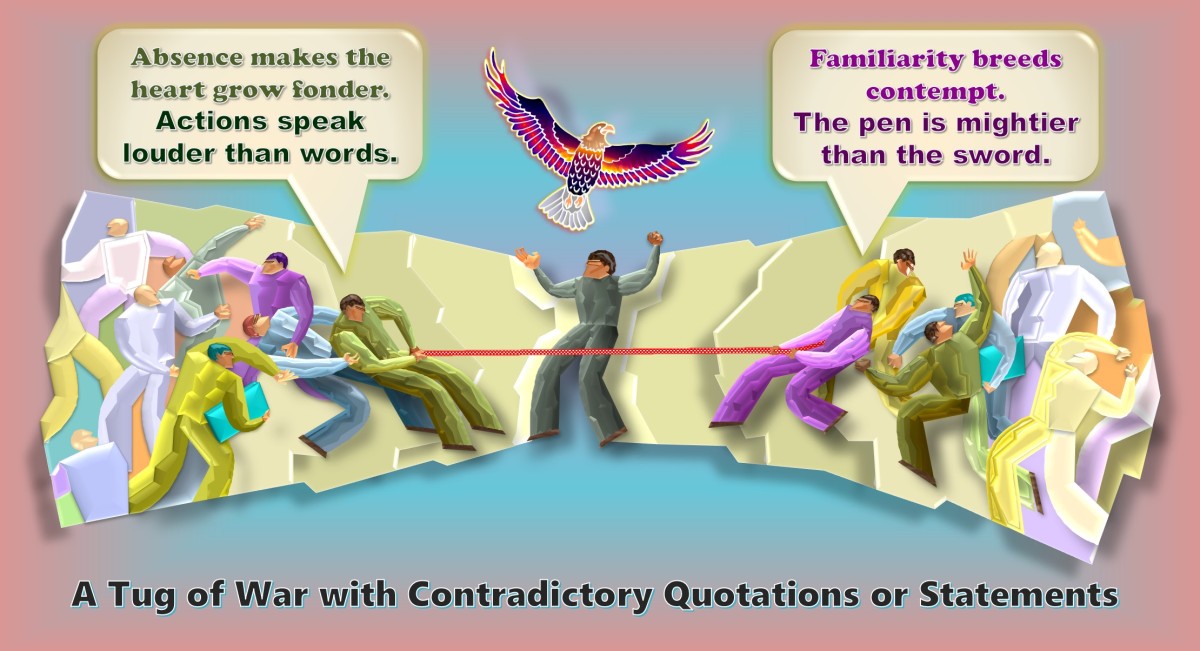SoundEagle witnessing a Tug of War with Contradictory Quotations or Statements
For instance, what might first appear to be very persuasive and highly sensible quotations could be inescapably self-contradictory, meaning that one can find quotations that are apparently reasonable on their own but are at odds with each other when put side by side, or when examined from other perspective(s). At the very least, one needs to concede the validity of the law of noncontradiction, which dictates that contradictory quotations or conflicting statements cannot both be true in the same sense at the same time (‘Nothing can both be and not be’), as well as the law of excluded middle, which mandates that for any proposition in a quotation or statement, either that proposition is true or its negation is true (‘Everything must either be or not be’). In short, many quotations that people use or encounter daily are quite circumscribed in their validities and reliabilities. Upon applying careful inspection and higher-level scrutiny, they can be revealed to be far from universally true or comprehensively applicable.
As the illustration above and the examples in the Table of Contradictory Quotations or Statements show, there are plenty of quotations or statements that apparently contradict one another. Stoking confusion or evoking befuddlement aside, contradictory quotations or statements could provoke conflict, scepticism or incredulity if they were used or found in close proximity to one another in any given situation. Nevertheless, many, if not all, of the contradictions would be alleviated, resolved or eliminated by observing the contexts surrounding the quotations or statements. Only then could any pertinent nuance, subtext, mishandling, misquotation, miscontextualization, misrepresentation and other concomitant defect or associated irregularity be identified. In other words, when using, treating or encountering a pair of quotations or statements that appear to be incongruous or contradictory with each other, it pays to examine and comprehend the intended purpose and relevant context of those quotations or statements, and to know which quotation or statement is applicable when, so as to mitigate or avoid being mired or stymied by the conflicts and inconsistencies arising from the inappropriate juxtaposition of certain quotations or statements.
